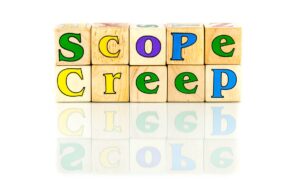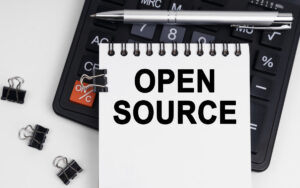Good management is an essential part of a successful project, which is made possible with good documentation. This article explores the topic of project management documentation, including what it is, its benefits, uses, phases, tools, and more.
It also shares a project management program professionals can take to get practical experience and earn a certificate.
What Is Project Documentation?
Project documentation is a collection of documents and data that captures a project’s relevant information. Usually, the project manager collects all the project’s relevant documents for each stage, including files related to budgeting, design, goals, proposals, requirements, implementation, testing, deployment, and support. Project documentation lets project leaders stay organized, track progress better, and ensure compliance.
The Benefits of Documentation in Project Management
It is no surprise that collecting all your project’s documents into one place helps the team work more efficiently; they don’t have to waste time searching for files or disrupting workflow when they need to refer to budgets or when stakeholders want to see a project proposal or design. Here are some of the primary advantages of project management documentation:
- Improved communication. Documenting the project ensures it remains transparent and all stakeholders are on the same page. This makes updating the different timelines, milestones, and deliverables easier.
- Enhanced collaboration. Collaboration becomes easier when all relevant documents are accounted for since members from different teams enjoy access to the same information. Project documentation ensures everyone is on the same page and working together towards the project’s common goal.
- Increased accountability. You can better guarantee that the project’s stakeholders are held accountable for tasks they’re responsible for when you document the different project steps.
- Provided clarity. Project documentation adds value to the development process by clarifying work’s progress and what is left to do and establishing work requirements, goals, and objectives.
Also Read: What is a Project Management Office? A Beginner’s Guide
Project Management Documentation Uses
Experienced project managers specialize in making and following standard project documentation templates. These managers reuse successful business cases, project plans, requirement sheets, project status reports, and other resources to help them focus on managing the project rather than balancing unmanageable paperwork.
Project Documentation by Project Phase
Not all project management documentation is the same; it varies depending on the project phase. Most projects are split into stages: initiation, planning, execution, and close-out. Here’s a very brief overview of each phase’s documentation.
#1. Project initiation. Project initiation documents define project goals and objectives and include the following:
- Project charter
- Project proposal
- Business case
- Project kickoff meeting agenda
#2. Project planning. Here’s a list of the documents you will need during the project planning phase:
- Work breakdown structure (WBS)
- Work plan template
- Working agreement
- Statement of work (SOW), especially if the project will employ professionals outside the organization
- Project schedule
- Communications plan
- Risk management plan
- Quality management plan
- Procurement plan
- Change management plan
- Project budget
- Resource plan
#3. Project execution. Project execution documentation helps track the project’s performance and progress. This stage includes the following:
- Deliverables
- Issue log
- Status/progress report
- Timesheets
#4. Project close-out. Close-out documentation helps you wrap up the project and hand it over to the client. This final stage includes the following documents:
- Project closure report
- Customer satisfaction survey
- Audit report
- Project archive
Also Read: AI for Project Management: Creating More Efficiency, Accuracy, and Better Results
Types of Project Management Documents
Each project will have different documents reflecting the unique scope, type of project, and team members involved. However, all kinds of projects can benefit from documentation because it provides organization and clarity. Let’s review some different document types you should include.
- Project charters: This document outlines the project’s components, scope, objectives, and stakeholders as a general anchor to guide you through the milestones.
- Statement of work (SOW): This is a formal agreement between two parties that outlines the project’s scope and objectives, often used when working with external parties.
- Project status reports: These useful reports help project managers track recent task updates and check on a project’s progress.
- Risk management plans: A risk management plan outlines potential risks and roadblocks that may occur during a project and includes plans for reacting to them, including solutions.
- Financial plans: This document summarizes how funds are allocated to the project’s various tasks and milestones.
- Issue tracker: Issue trackers allow project managers to monitor issues that may arise at any point in the project. This process helps prevent more significant issues later on.
- Technical documents: Technical documents contain details for designing, using, or developing a technical system, plus information on functions and safety.
- Rollout plan: A rollout plan documents how systems will be implemented in an organization, including the different phases, steps, and training.
Project Management Documentation Best Practices
Files aren’t usually created with documentation in mind, but it’s essential to adapt them appropriately when organizing all your documents to make it more convenient to retrieve data. So, follow these tips to manage your project documentation seamlessly.
- Build up a team of contributors. Project documentation is a collaborative process, so create a team of editors, contributors, and reviewers pulled from different teams to ensure your documents are consistent and accurate.
- Stick to a consistent structure. Use clear headers, labels, prioritization, topics, tags, and sub-topics to ensure documents are well-structured and easily searchable.
- Make good use of templates. Templates help your team structure project documentation so that it’s easy to search and reference data. Start things smoothly with a work tool like monday.com (see the Tools section below) with built-in documentation templates.
- Update documentation regularly. Keep track of document version histories and update documentation regularly for the project’s lifespan to guarantee that the information is always current.
- Don’t get bogged down by minutiae. Not every document has to be highly detailed; sometimes, less is more. Being concise makes some documents more accessible. Ensure your documents have enough information for their relevant tasks.
How to Create Project Management Documentation
Follow these steps for successful project management documentation.
- Collect all necessary files. Documents are scattered across many platforms, such as hard drives, internal messages, Word docs, e-mails, and PDFs. So, the first step in the project documentation preparation process is gathering all these tools into one centralized space.
- Ensure the documents are descriptive. Each project stage requires different documentation, so ensure you have all the necessary documentation for each stage from start to finish. Naturally, more documents are expected to be added during the project, but having the right ones on hand from the beginning helps keep tasks on track.
- Structure documents for easier searches. Existing documents might be loaded with unnecessary information, which can distract when searching for specific data. To save the team time, consider adding features such as internal links, table of contents, and sub-categories.
- Make the production a collaborative effort. It can be challenging to separate relevant information from noise and clutter, so get your team involved in the project documentation process’s early stages to help contribute or review and improve essential documents. This involvement ensures anything that needs to be clarified, added, or updated gets addressed and updated.
- Publish and maintain your documents. When the documents are finalized, add extra touches and features such as tags and indexing to the documentation platform to facilitate searches. Project documentation is an ongoing effort that demands regular maintenance as the project develops, so you regularly review the project documents to ensure they’re up-to-date and relevant.
Also Read: Exploring Top AI Project Management Tools
Project Documentation Tools
There’s a plethora of project documentation tools available today. Here’s a sampling:
- BigTime. BigTime is Professional Services Automation (PSA) software that lets users track and act on operational metrics. It simultaneously simplifies time management, expense management, and billing for multiple projects.
- monday.com Work OS. This tool helps teams plan, execute, and track projects in one centralized, collaborative workspace. It features over 200 templates, easy integrations, and intelligent no code automation.
- Quickbase. Quickbase is a no code software platform that lets users create customized solutions as it incorporates analytics, billing, expense tracking, and more.
- Workzone. Workzone is ideal for project managers who manage many projects at once. Its easy-to-use features include resource management, collaboration, reporting, sharing Gantt charts, etc.
- Wrike. Boasting over 400 application integrations, Wrike lets managers visualize priorities, enhance collaboration, and keep projects under control.
- Zoho Projects. This tool allows managers to automate project notifications, tasks, and workflows. It offers intuitive reporting of budget health and project progress, enabling teams to make decisions faster.
Learn About Project Management
If you want to learn more about project management and become a project manager, check out this professional certificate program in project management online course. This 12-week bootcamp is aligned with IASSC-Lean Six Sigma and PMI-PMP® and helps you gain the skills needed to master complex projects and ensure success in today’s complex digital age.
Indeed.com indicates that project managers earn an average yearly salary of $88,949. Check out this certification course to sharpen your project manager skills.
FAQs
Q: What is project documentation in project management?
A: Project management documentation collects documents and data that capture a project’s relevant information.
Q: What are the different types of project management documentation?
A: Project documentation types include:
- Project charters
- Statement of work (SOW)
- Project status reports
- Risk management plans
- Financial plans
- Issue trackers
- Technical documents
- Rollout plans
You might also like to read:
How to Negotiate the Best Project Manager Salary
What is Enterprise Resource Planning, And How Does It Help Organizations?
What Are Network Diagrams in Project Management, and Why Are They Effective?
What is the Pomodoro Technique & How Does It Help in Time Management?







